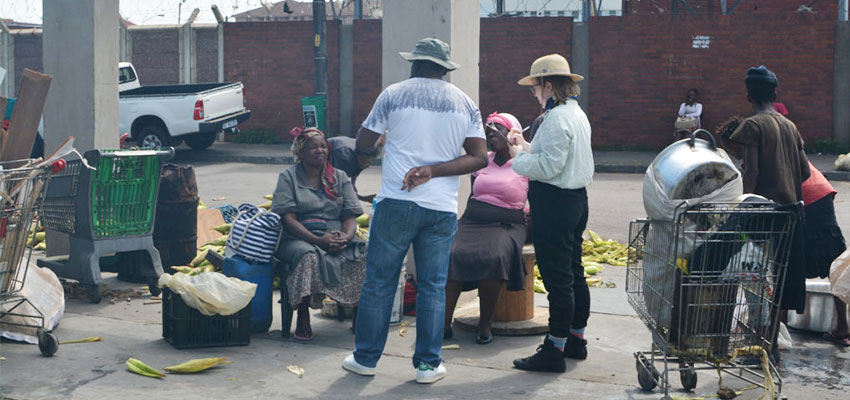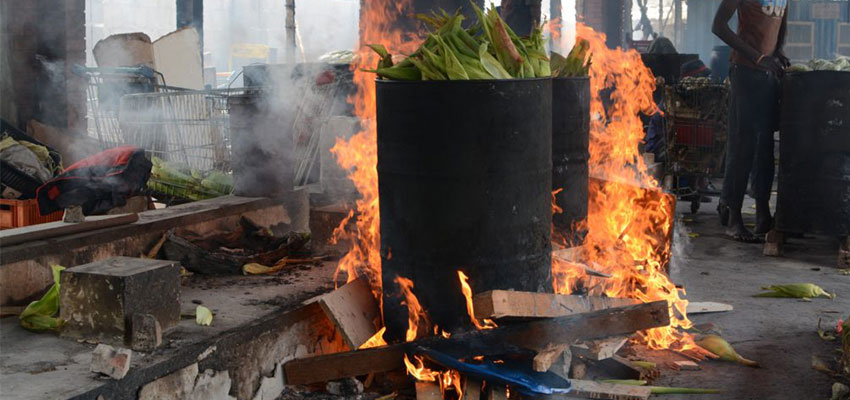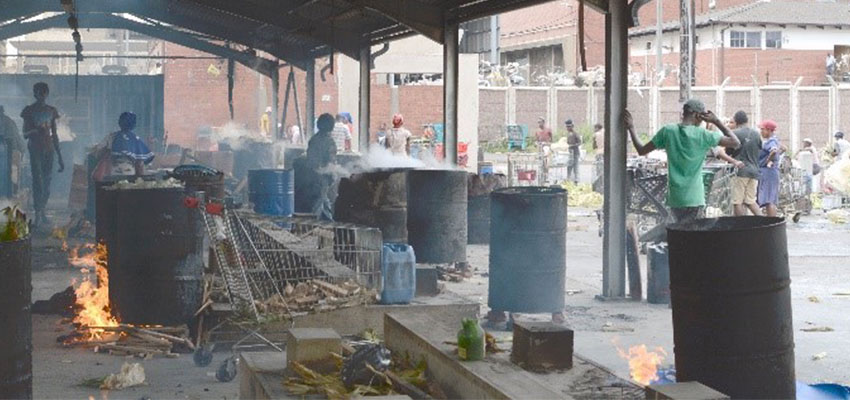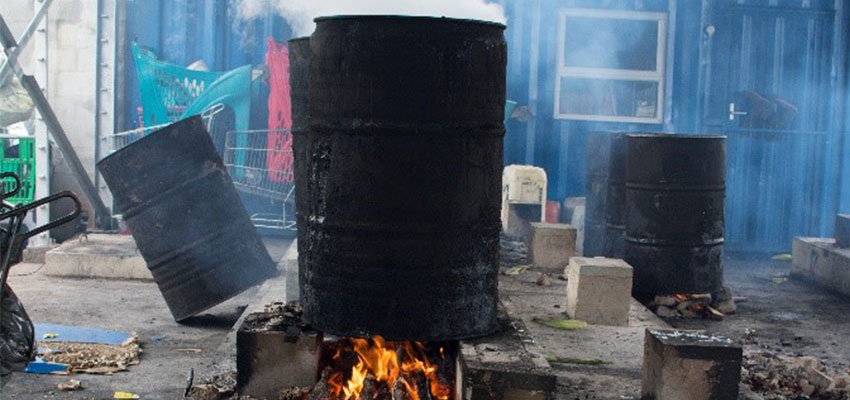
Original blog post on the Asiye eTafuleni site
Freshly cooked mealies (corn-on-the-cob) are an essential Durban street food staple – they’re healthy, affordable and conveniently accessible to the local commuter population. Over the years, the preparation of mealies in the inner city has developed incrementally- from the hazard of large open fire cooking on city pavements, to a designated site and most recently a City built cooking facility. However, the process of preparing the mealies in a way which is less harmful to the environment remains a complex challenge for both mealie traders and City managing authorities.

A number of workplace safety and public health challenges emanate from the rigour and robust nature of the cooking practice. These are amplified by the complexities observed in seasonal dynamics of product and cooking fuel supply chains and economics, the skill and labour intensity of industrial cooking on open fires, the politics of self-organised networks, as well as the precarious street trading conditions. The improvement of the working conditions of informal traders therefore requires strategic and integrated interventions at varying scales.


Earlier this year AeT, the mealie cooks and MIT Create and MIT D-Lab collaborated towards the refining of the Mealie Cooks cooking method through the development of a pilot horizontal stove intervention, as a point of leveraging an improved workplace environment for the informal traders. The following methods and processes were followed from the scoping through onsite testing of the stoves:
Obtaining understanding and establishing the nature of the cooking challenges was acquired through various approaches which included both ‘street’ urban intelligence (including contextual observation and user engagement) as well as technical considerations, both social and scientific. Specifically, mealie cooks were observed and interviewed on the how and why of their cooking practice and the information gathered was then evaluated against scientific calculation where necessary.

Key insights included the limitations the stove design would have with regards to appropriate materials and fuels (ie. most efficient materials with a lowest street value- to discourage theft in the absence of capital and reliable security), such as the mild steel drums, on the three stone fire cooking currently used. Another key aspect was around possible trade-offs and non-negotiables for the cooks, such as maintaining or improving cooking time efficiency, in the process of improving smoke emission and fuel efficiency.

Whilst the provision of basic infrastructure such as shelter the development of informal trade practices requires a holistic consideration, which includes understanding and a critique of the tools and technology used for practice. A collaborative approach, such as this, which is both technical and scientific and user-centered, provides various lenses through which the challenge can be dissected. In this exercise it meant a broader scope of permutations for the appropriate technological response could be explored, and yet narrowed down to the few most effective options, which required minimal intervention with the most substantial and sustainable impact.
Continue reading (part 2)
About the authors
Phumelele Mkhize is a candidate architect and researcher based in Durban. She has worked for Asiye eTafuleni since 2015, initially as a collaborator on the Kanyenathi Project, and is now their in-house project assistant. She is passionate about design driven by community action and collaboration. Phumelele is also engaged in research that questions the accepted assumptions of development in cities across Africa, and is an advocate for inclusive design strategies.
Trang Luu finished her undergraduate work at MIT in 2018 and is a current MIT graduate in the Mechancial Engineering department. She is an alumna of the 2018 class D-Lab: Design, where this project got its start, and current research assistant at D-Lab working on evaporative cooling.

